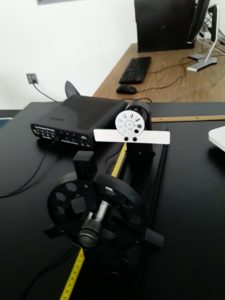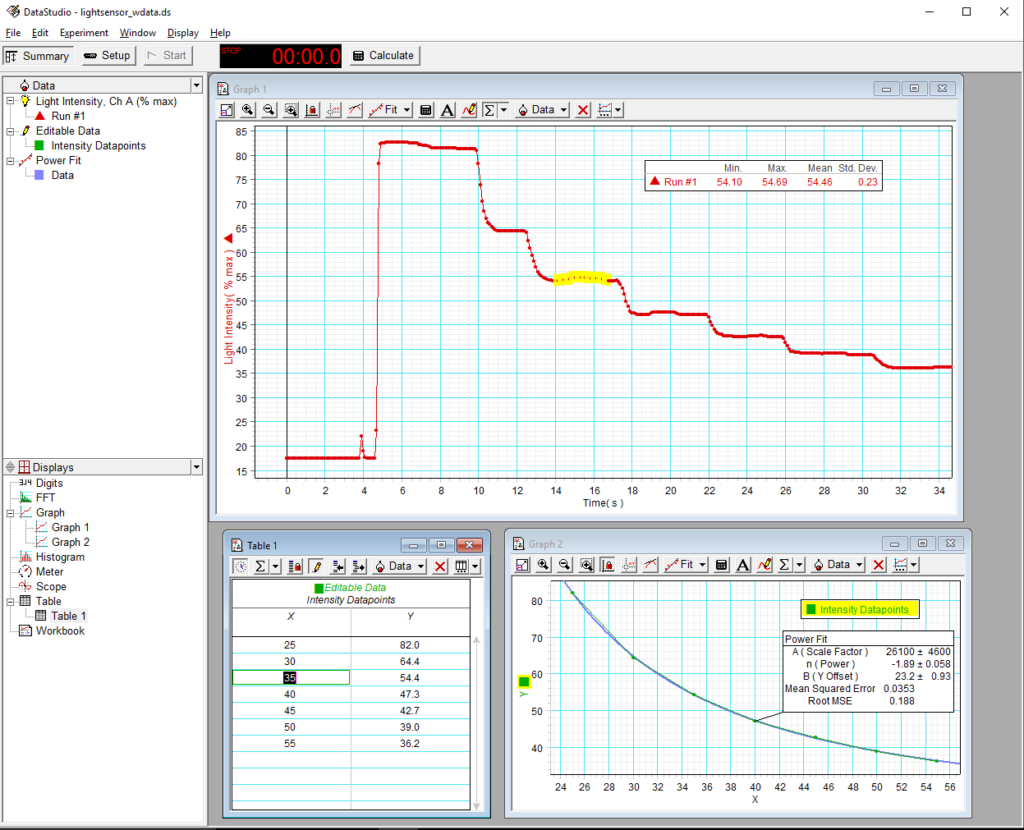Inverse Square Law
Objectives
- Measure light intensity vs. distance from a light source
- Use your plot to verify the inverse square law for light
Resources
- Optical rail
- Light source (flashlight, table lamp, etc)
- Light sensor with aperture bracket
- Meter Stick
- ScienceWorkshop interface and DataStudio software
- setup file: lightsensor.ds
Background
Intensity is defined as the amount of energy per second moving through an area, or the power per unit area (e.g. Watts/m2). Intensity is the quantity we experience as the brightness of a light source. The intensity of light decreases as one moves farther away from its source, because the same amount of power is spread over a larger area. The source appears less bright because less energy per second is captured by the area of our pupils.
If light spreads out evenly in all directions from a point source with an output power P, the intensity at a distance r is I=\frac{P}{4\pi r^2}
Setup
Set up the light source and sensor on the track as shown. On the light sensor, turn the aperture selector (the white plastic disk with various slits/shapes cut out of it) to the solid white circle. The circle is actually translucent and provides more uniform illumination of the sensor, which is useful when measuring a diffuse light source.
Analysis
Since you will record the distance between the light source and light sensor manually, you will need to analyze your intensity vs. distance data separately. A spreadsheet program can be useful for this, or it can be accomplished using Datastudio directly.
